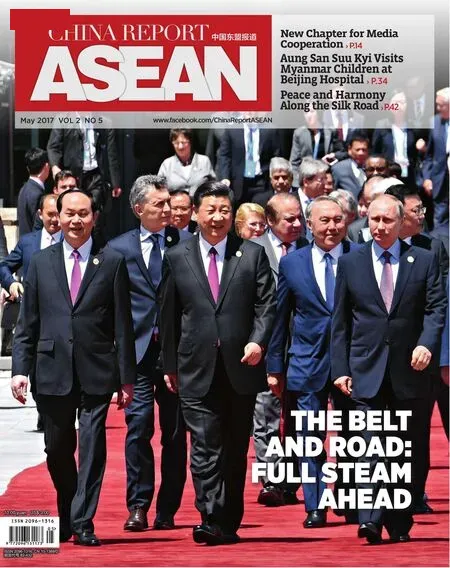UN: Cutting Corruption Will Narrow ASEAN Development Gaps
UN: Cutting Corruption Will Narrow ASEAN Development Gaps
New report indicates that improved governance would help poorer ASEAN countries catch up
One of the key challenges for the South-East Asian subregion is narrowing the development gap within ASEAN between the later-entrant countries— Cambodia, the Lao People’s Democratic Republic, Myanmar and Vietnam (CLMV) — and those which had become members of ASEAN earlier.
In income terms, the gap in the ratio of GDP per capita between the early-entrants of ASEAN and CLMV remains wide, although it has been gradually narrowing. The ratio stood at 10.6 in 2015 and 4.1 if the highest-income economy in the subregion, Singapore, is excluded. If concerted and coordinated measures are not taken to accelerate the narrowing of the income gap between the ASEAN-4 (Indonesia, Malaysia, Philippines and Thailand) and CLMV, it may take another 40 years to eliminate the gap completely.
Analysis of World Bank Worldwide Governance Indicators that relate to the rule of law, regulatory quality, control of corruption and government effectiveness shows that CLMV performed poorly in all of these governance dimensions compared to their ASEAN peers. Moreover, for most of the indicators there has also been little improvement over the periods between 1995-2004 and 2005-2014. Indeed, control of corruption has deteriorated, whereas for other indicators performance has largely been unchanged apart from the rule of law, which has improved.
The importance of governance for socioeconomic development in CLMV can be seen by considering some of the relationships between their development indicators and governance performance. One key concern for CLMV is financing their development needs. Apart from external development assistance, this involves increasing domestic resource mobilization from both the public and private sectors. Another important relationship for CLMV is between governance performance and social development, especially in the critical spheres of health and education.
Among CLMV, the greatest governance challenge is currently being faced by Myanmar. This is not surprising as the country has been in a transition process since 2010 involving economic and political opening. Good governance is especially important for attracting investors during the economic opening of the country as it attempts to diversify from an economy based on natural resources.
The Lao People’s Democratic Republic, while benefiting from stable growth in recent years, remains the country with the lowest level of income per capita in the subregion. Corruption, which remains a significant barrier to accelerated development, has increased as a result of growth in the natural resources sector and an influx of foreign investment in recent years. The country would also benefit from enhanced capacity for citizens and businesses to denounce corruption cases through advocacy, education and the improvement of the interface between citizens and the State Inspection and Anti-Corruption Authority.
Cambodia, another fast-growing country in the subregion, faces a particular challenge compared with its neighbors in terms of performance under the rule of law. Some of the key elements are judicial independence and enforcement of the law. The Government has undertaken various legal and judicial reforms. The country could also improve merit-based promotion and institute a tieredpay system in enforcement, the police and the judiciary; eliminate the patronage system; enforce training standards; and make sure that recruits meet minimum requirements.
While Vietnam performs better in terms of the abovementioned governance indicators, it should undertake more regulatory reforms to pave the way for the economy to move to upper-middle-income status. The Government has undertaken ambitious reforms recently: in 2016, Regulation 35 proposed regulatory reforms that would increase the private sector’s share of Vietnam’s GDP from 43 percent to 49 percent; the Government also issued 50 decrees clarifying guidelines for enterprises and removing about 3,500 regulations, the most ambitious cutting of red tape in the country. However, further work is required to reduce administrative burdens, overcome human resources constraints and simplify an overcomplicated, restricted and unclear licensing and regulatory environment.
from UN Report Economic and Social Survey of ASIA and the Pacific 2017, released on May 8, 2017 in Beijing, China)

